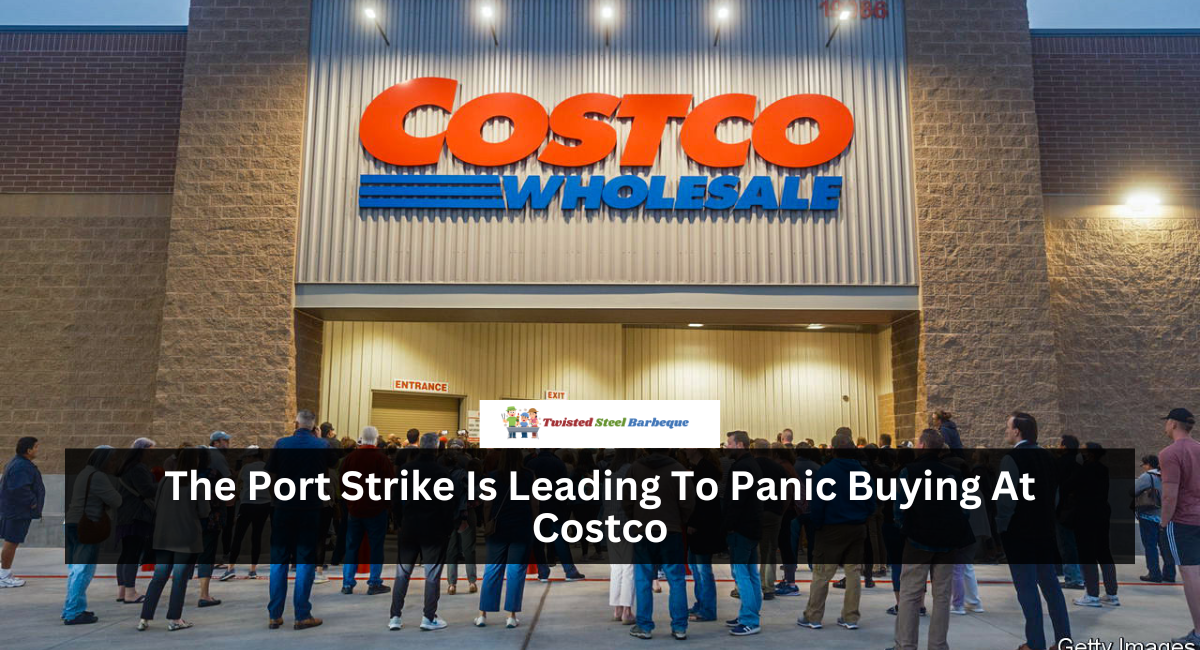In the United States, a strike at ports on the East and Gulf Coasts is impacting many areas, causing shortages of goods and people to buy in a hurry.
This situation, which reminds me of the lack of toilet paper during the COVID-19 pandemic, makes me worry about how customer behavior can worsen supply chain problems. We’ll talk about the specifics of the strike, how it’s affecting supply lines, and how people are responding.
The Situation Right Now
Lately, there have been rumors of a strike at important U.S. ports that are needed to bring goods in from other countries. A lot of things will probably not be available because of the strike, like fresh veggies, car parts, and chocolate. But this has kept people from getting things in a hurry that aren’t touched by the strike.
For example, a Costco worker said on Reddit that people are stockpiling paper towels and toilet paper, which are not affected by the strike. This illogical behavior is leaving store shelves empty, making customers angry, especially those who know how the supply chain works.
A Common Response to Panic Buying
People have been discussing the current trend of fear buying on social media sites. One interesting event happened at a Walmart in Virginia. A customer shared a picture on X (formerly Twitter) of almost empty shelves with the words “Toilet paper hoarding 2.0!” These reactions show how quickly people can go back to shopping out of fear, even when the items they are keeping are easy to find.
People expect that the strike at the ports will lead to real shortages, and it could have a bigger effect on the economy if it lasts for a long time.
The funny thing is that the strike did not affect many things people were stockpiling, like toilet paper and paper towels. Because of this behavior, gaps are happening that don’t need to happen and could have been avoided.
Learning About the Supply Chains for Paper Goods
It’s important to understand how the supply lines for toilet paper and paper towels work in order to understand what’s going on. The current port strike mostly affects items brought into the U.S. and emptied at ports on the East and Gulf Coasts.
The United States makes most of the toilet paper sold in other countries. Most of the paper goods Americans use are also made in the United States or brought in from nearby countries like Canada and Mexico. Because it doesn’t depend on shipping from other countries, the quantity of toilet paper stays stable during the strike.
Important paper towel brands also use a delivery plan to protect them from the strike’s effects. The goods are easy to find, but panic buying makes it seem like there aren’t enough, angers and confuses customers.
Frustration Among Consumers and Reactions on Social Media
Many people are angry about the current situation, especially those who remember how hard things were during the COVID-19 outbreak. One person on Reddit said, “90% of TP creation is local! It doesn’t come through ports; it comes on trucks!” This feeling shows how skeptical most buyers are, who know that their fear of buying is pointless.
Similar problems have also been reported at Costco stores in Gilbert, Arizona, and Northern California. Some customers also report a big increase in demand for bottled water. This is another example of how fear can make people stockpile things they don’t need.
The Bigger Picture: What It Means for the Economy
People buying things out of fear is a clear problem, but the long-term effects of the port strike could be very bad. If the strike continues for a long time, some goods may become scarce because of the problems in the supply chain.
It’s possible that fresh foods like bananas, mostly imported from Ecuador and other South American countries, will become hard to find. People wouldn’t be the only ones affected by these kinds of shortages; food stores, restaurants, and other businesses that depend on foreign goods could also be hurt.
Economic experts say the strike’s effects on the economy will get worse as it continues. Stores may have to work harder to replace their shelves, which could put more stress on supply lines and raise customers’ prices.
Lessons from the Past: What We Can Learn from Past Shortages
The present crisis reflects what we should have learned from past ones. The COVID-19 outbreak showed how quickly people could change their behavior when they thought there were shortages.
Many people got used to storing necessities, and they’re doing it again during this port strike.
It’s important for customers to know that the strike isn’t affecting all goods. Educating people and making them clear about supply lines can help prevent people from buying in a hurry.
Retailers and producers can also do a lot to let customers know when goods are available to prevent people from hoarding things they don’t need.
Conclusion
It is important for customers to stay cool and know what is really going on in the supply chain during the port strike. People may feel safer for a short time when they buy in a panic, but it causes more problems in the long run for everyone.
Some goods may run out because of the strike, but it is very important for customers to know which ones are touched and which are not.
By buying more reasonably, customers can help ensure that everyone can still get the things they need. The current situation shows the fragile balance between supply lines and consumer behavior. It also reminds us how important it is to stay informed and not make choices based on fear.
READ MORE: What Could Go Wrong If You Drink Apple Cider This Fall

